8 Car Fluids to Check to Keep Your Vehicle Running

Your car is an assembly of systems and machinery working together to get you from point A to point B safely. These systems depend on various types of fluid to operate efficiently.
Part of being a responsible car owner is knowing what these fluids are and checking them when needed. But because there are many of them, it’s easy to mix them up, especially if you’re not well-versed in automotive care. Keep your car in tip-top shape by familiarizing yourself with its various fluids with this comprehensive guide.
What Fluids Do I Need to Check In My Vehicle?
Here are the eight types of car fluids you should check regularly to keep your vehicle running smoothly:
Engine Oil
Engine oil or motor oil is responsible for lubricating, cooling, and providing a liquid barrier between the internal parts of your engine. You can check the engine oil dipstick, which is typically found near the front of the engine in front-wheel drive vehicles or behind the engine in rear-wheel drive vehicles.
Types
There are three primary types of engine oil: full synthetic, conventional, and synthetic blend. Conventional oil is refined crude oil, while synthetic oil is a chemically engineered product. As you might guess, a synthetic blend is a mix of conventional and synthetic oils.
How to Check
Motor oil is honey or amber in color, and it turns light brown when it's time for an oil change. Engine oil that’s black (in a gas-powered engine) is long overdue for service. If it smells burnt, have it checked by a mechanic right away. Failure to change your engine oil when necessary can lead to a variety of issues, including a total engine breakdown.
Choosing the Right Engine Oil
When looking for engine oil, you'll likely encounter various grades, such as 5W-30 and 5W-40. This guide outlines the differences between those two grades and discusses how you can determine the correct type of oil for your application.
Learn How to Change your Oil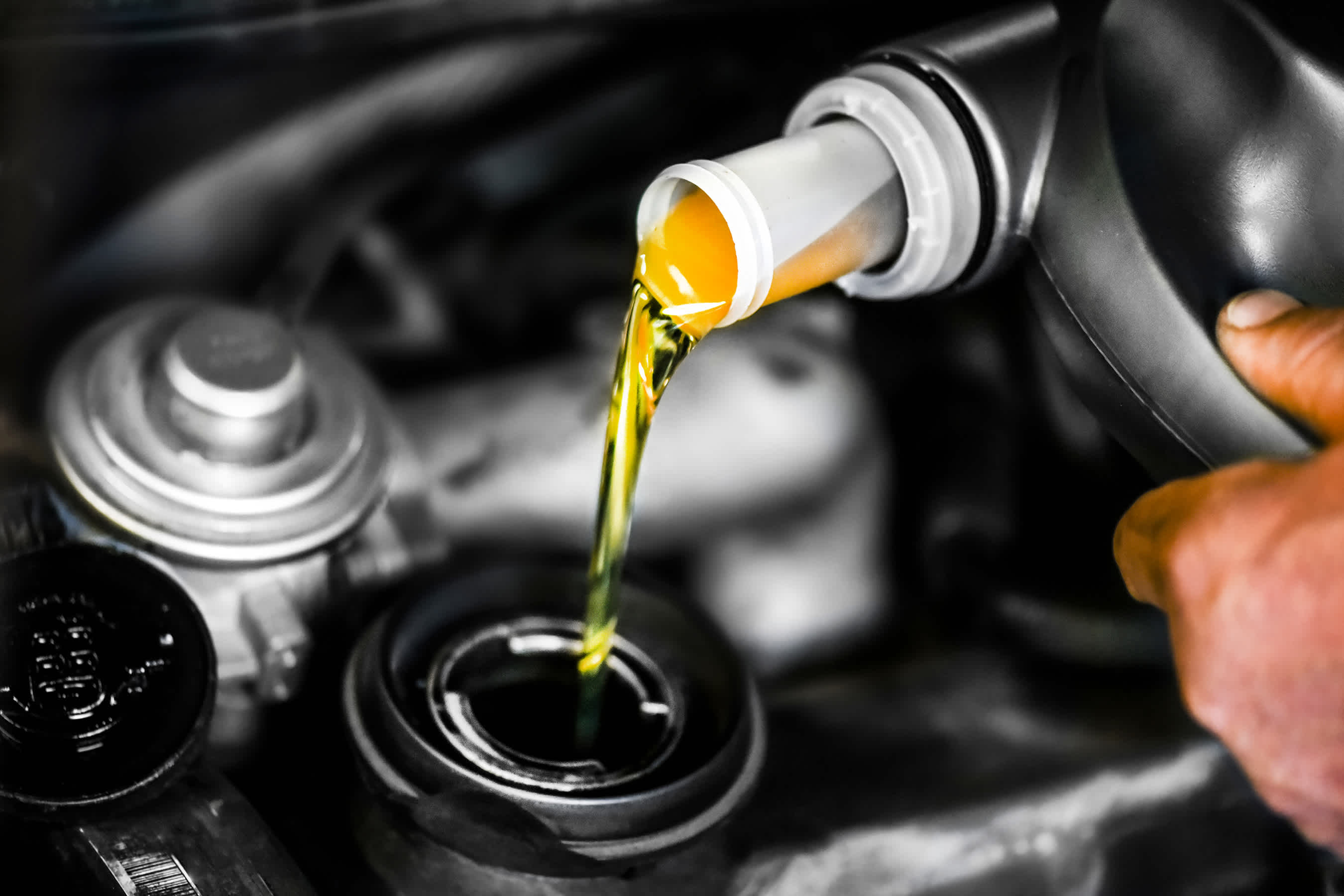
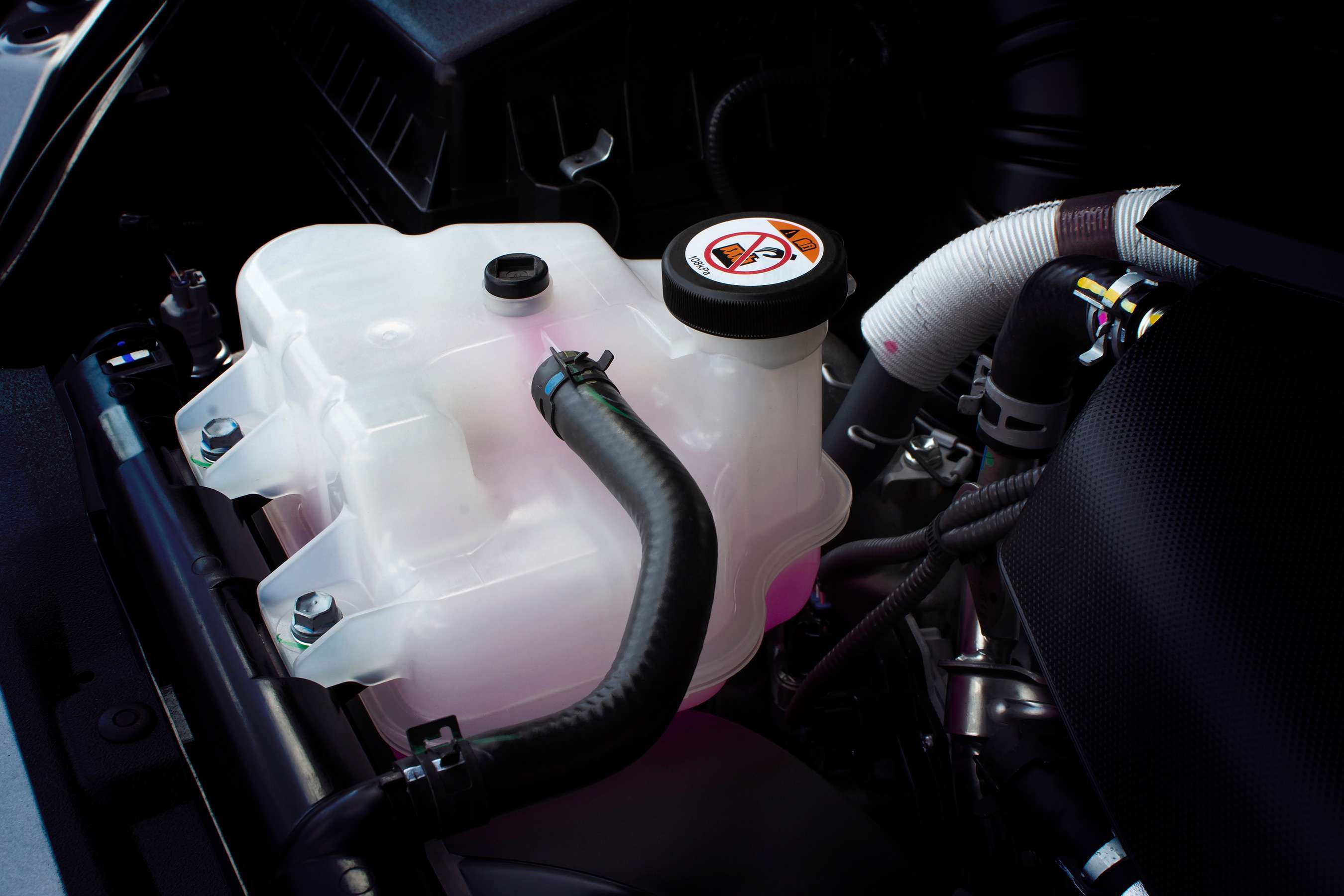
Engine Coolant
Also known as radiator fluid, engine coolant removes the heat from your engine and keeps it from freezing during winter.
Types
Engine coolant has three primary types: inorganic additive technology, organic acid technology, and hybrid organic acid technology.
How to Check
Engine coolant can leak out of the cooling system or get contaminated over time. Leaks can lead to low coolant levels, which may result in overheating and severe engine and/or cooling system damage. So don’t forget to check your car’s coolant levels every oil change. Also, keep an eye out for leaks and the signs you need a coolant flush.
A coolant flush removes the old coolant from the system and replaces it with fresh coolant. You can do it yourself if you have the tools and the know-how.
Choosing the Right Engine Coolant
Coolant comes in a variety of colors, ranging from green to purple. The color of the coolant in your radiator will depend on the year, make, and model of your vehicle. Check out this comprehensive guide to learn how to pick the right engine coolant for your ride and how often you should change it.
Learn How to Flush your Engine CoolantPower Steering Fluid
Power steering fluid is the medium that’s used to provide steering assist in a traditional (i.e., non-electric) power steering system. It suppresses foaming, prevents corrosion, and improves lubrication. It’s usually made of mineral oil or synthetic oil mixed with additives.
How to Check
A leak can result in low fluid levels and make your car’s steering feel heavy or hard to turn. If you think your vehicle is leaking power steering fluid, check the power steering fluid reservoir before bringing your car to a mechanic for repairs. Look for a dipstick or reservoir cap in the engine bay to locate the reservoir and check its fluid level.
If it’s not a leak, then you may have a bad power steering pump. Replace the faulty part right away to prevent additional repairs.
Note
Remember that not all vehicles have power steering fluid. Many modern cars have electric power steering systems that do not use hydraulic fluid.
Learn About Bad Power Steering Pump Symptoms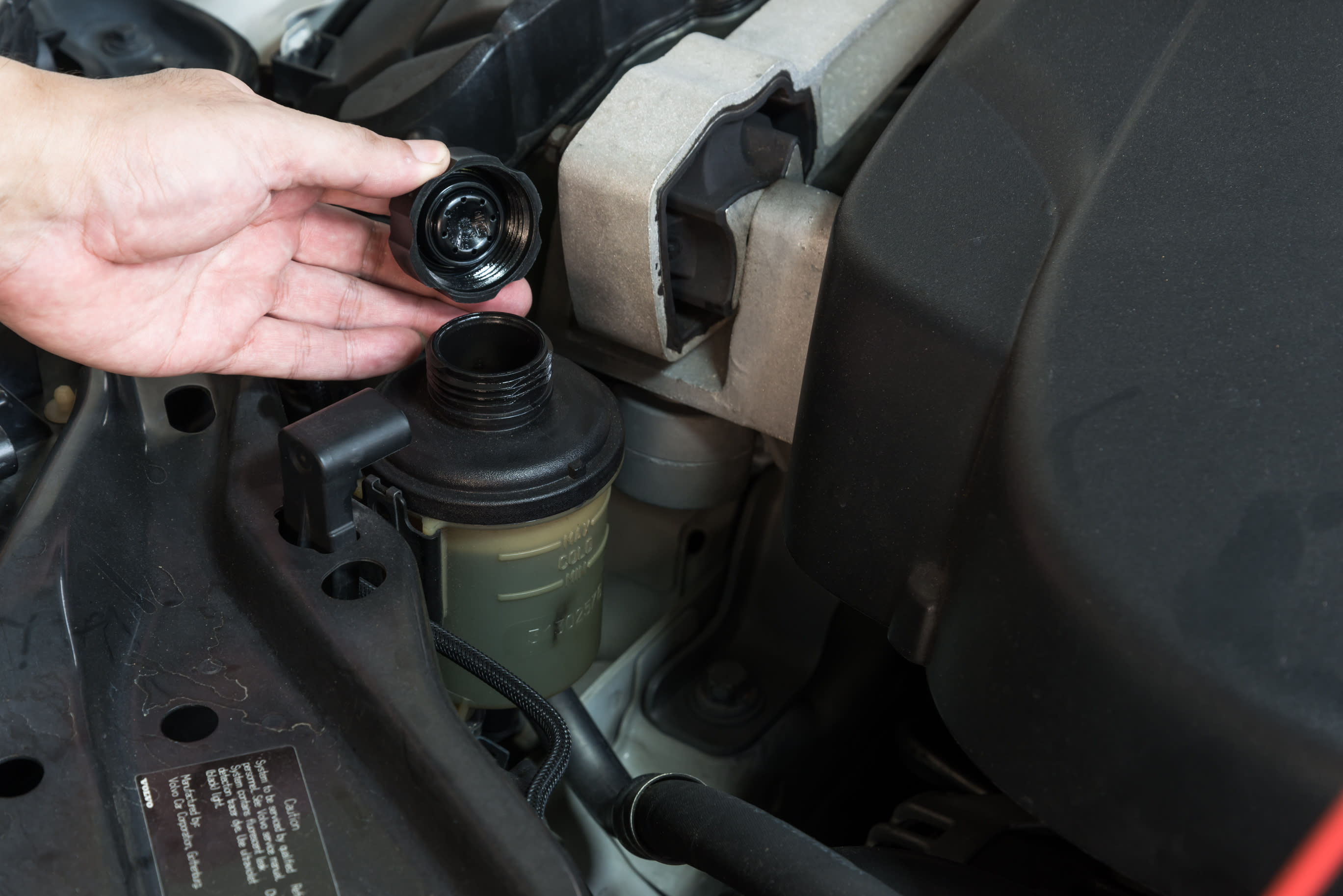
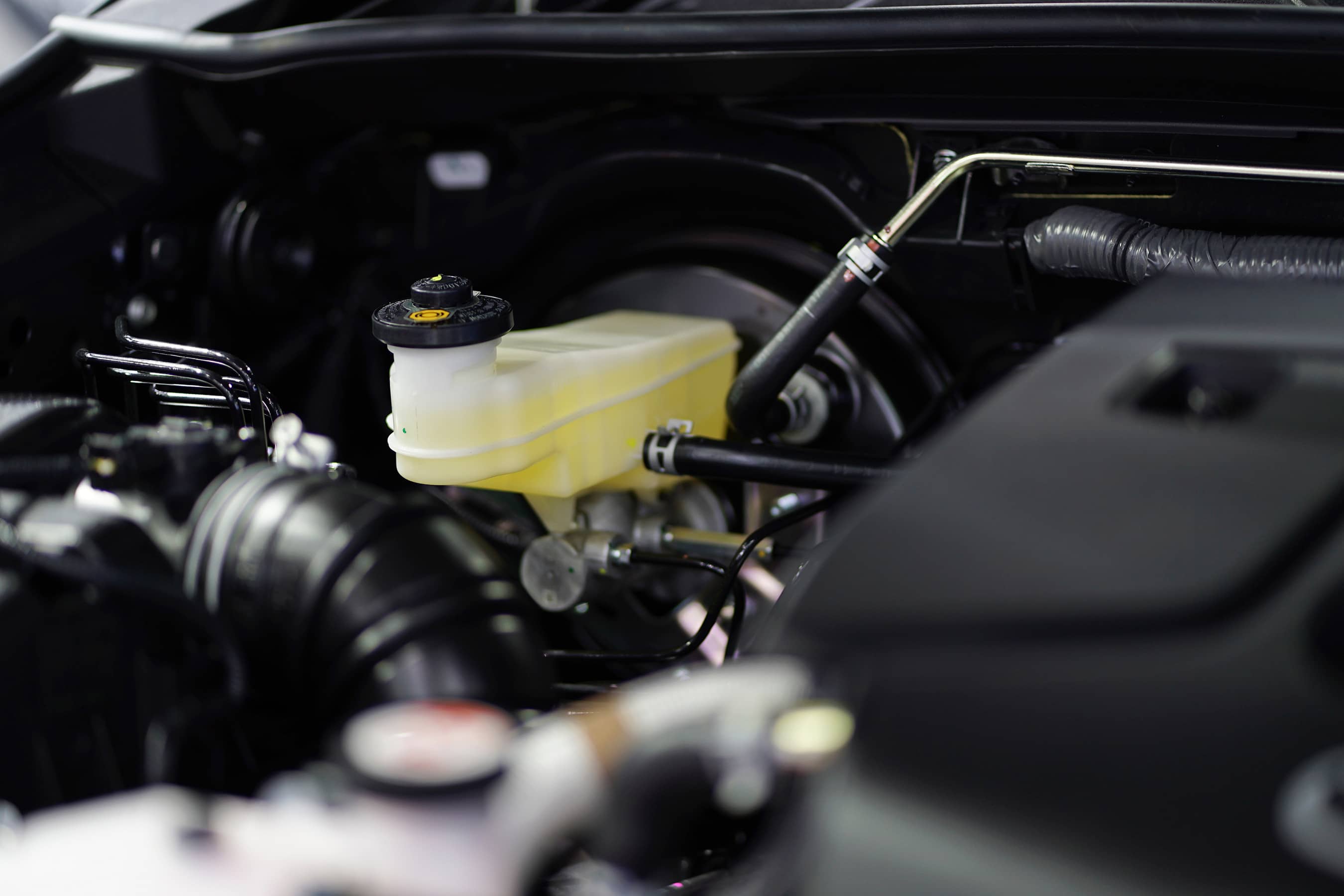
Brake Fluid
Brake fluid is a crucial part of your car’s braking system. It’s the medium that’s used to apply your car’s brakes when you step on the brake pedal.
To locate this fluid, look for the brake fluid cap under the hood, which usually has a brake fluid label. If you’re wondering what color brake fluid is, it’s usually amber or semi-transparent.
Types
The different types of brake fluid are DOT3, DOT4 and DOT5, DOT 5.1.
How to Check
If your brake pedal feels soft or you notice a change in stopping action, your brake fluid level might be low or contaminated. Irregularities in the fluid can negatively affect braking performance and even lead to a complete loss of braking ability.
Fortunately, it’s easy to check your brake fluid. Simply take the cap off your brake fluid reservoir and look at the level and color of the fluid. Make sure you know when to change your car’s brake fluid to prevent problems down the line.
Learn About the Types of Brake FluidTransmission Fluid
Similar to engine oil, transmission fluid helps keep your transmission lubricated. It also serves as the medium that acts on the various internal transmission components (e.g., clutch packs) to shift gears.
Types
There are many different types of transmission fluid, such as type F, Dexron III/Mercon, HFM-Style Fluids, and synthetic fluids. Automatic transmission fluid color is usually red or pink. Manual transmission fluid, which is usually gear oil, is typically honey-colored or semi-translucent.
How to Check
Check if your car has a dipstick for transmission fluid, and refer to your owner’s manual if it doesn’t. Use the dipstick to check your transmission fluid level. You may also check out our guide on how to change transmission fluid for step-by-step instructions.
You should always change the transmission fluid at the interval suggested in the vehicle manufacturer’s maintenance schedule. The information can usually be found in your owner’s manual or supplemental service booklet. Also, don’t disregard a transmission fluid leak. It can lead to severe damage that may require replacing your transmission to fix.
Learn How to Fix a Transmission Leak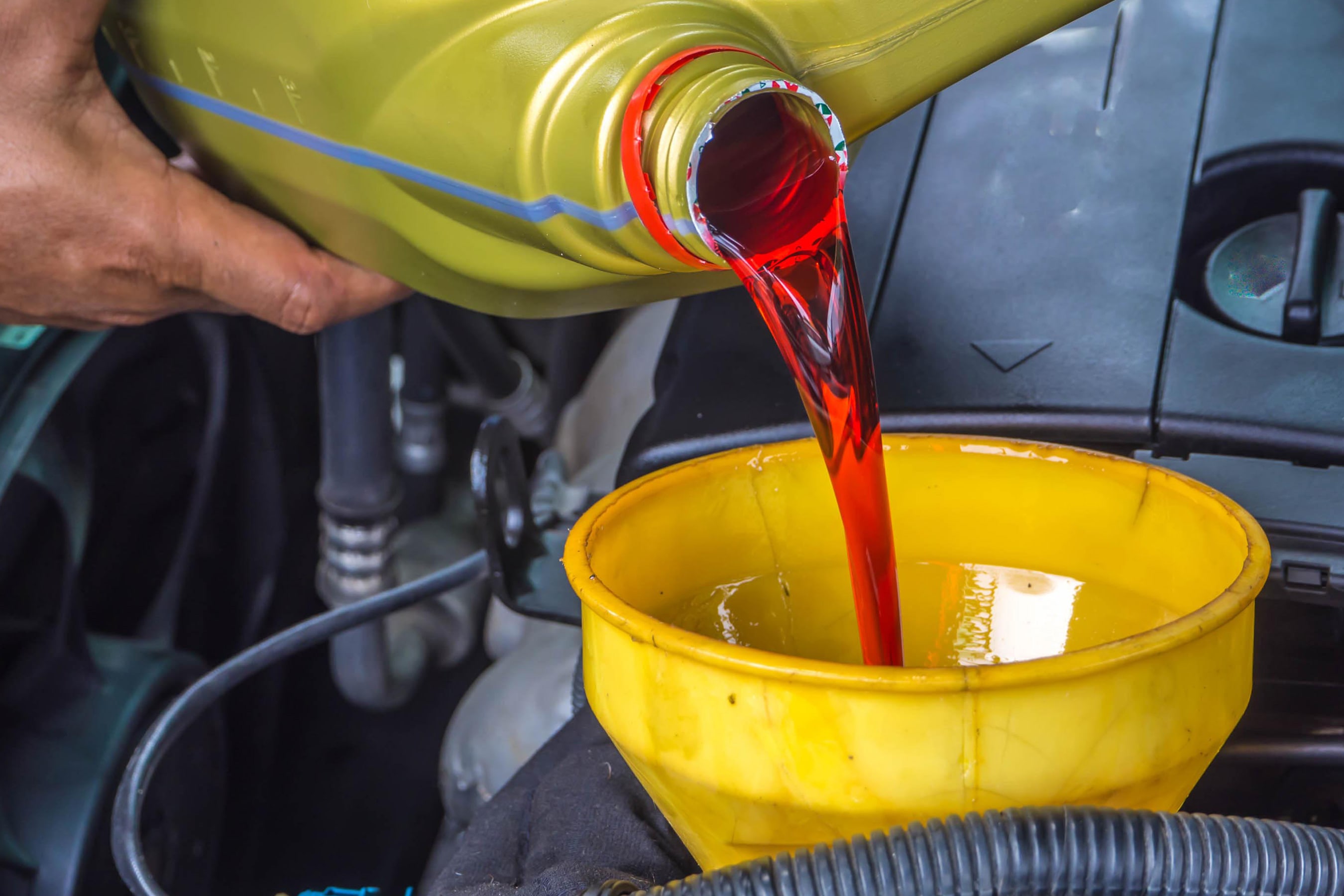
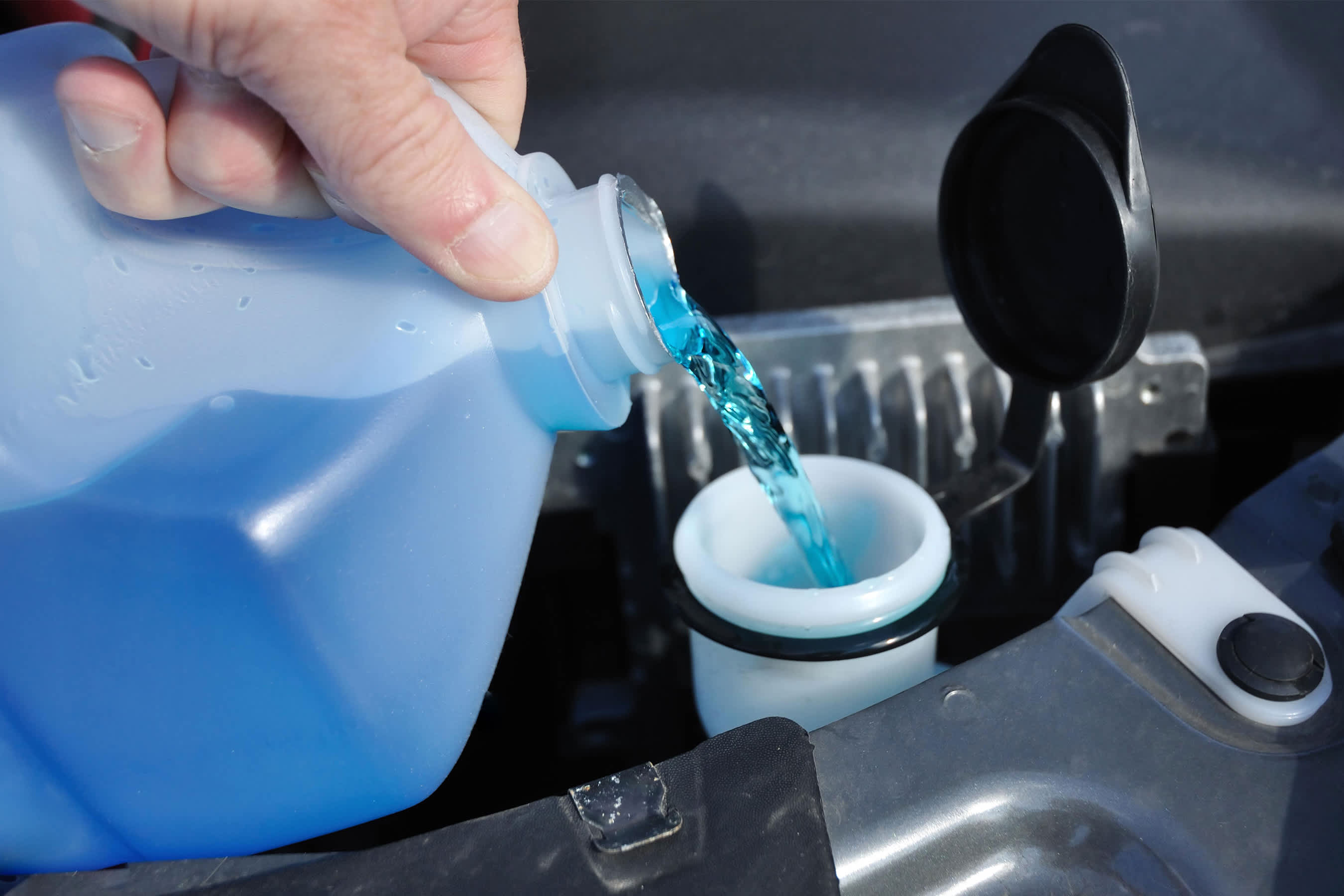
Windshield Washer Fluid
One of the most recognizable car fluids under your hood is the windshield washer fluid, which can come in blue, green, or orange color. It keeps your windshield clear from contaminants that could obstruct your vision.
How to Check
You’ll know you’re out of windshield washer fluid when nothing comes out of the nozzle when you turn it on. To be sure, you can check the transparent container under your hood labeled “washer” or “windshield.” The cap should come off easily. Replacing the fluid is as easy as pouring the new one into the container.
However, if you’ve refilled the reservoir and it’s still not working, the reservoir, washer pump, nozzles, or lines might have an issue and the windshield washer reservoir may need to be replaced.
Learn How to Replace a Wiper Fluid ReservoirDifferential Fluid
Some vehicles have a stand-alone differential that requires periodic fluid checks. The differential fluid lubricates and cools the differential's various parts, including the ring and pinion gears, bearings, and seals. Also known as gear oil, it is usually honey-colored or semi-translucent.
Types
There are two different types of differential fluid, namely mineral oil and synthetic differential fluid.
How to Check
The process of checking your car’s differential fluid will vary by vehicle. Consult your owner’s manual for the proper procedure for your application.
Typically, you must replace your car’s differential fluid every 30,000 to 50,000 miles. But once again, you should always consult your owner’s manual or supplemental service booklet to determine the correct interval for your vehicle.
Learn More About Underhood Maintenance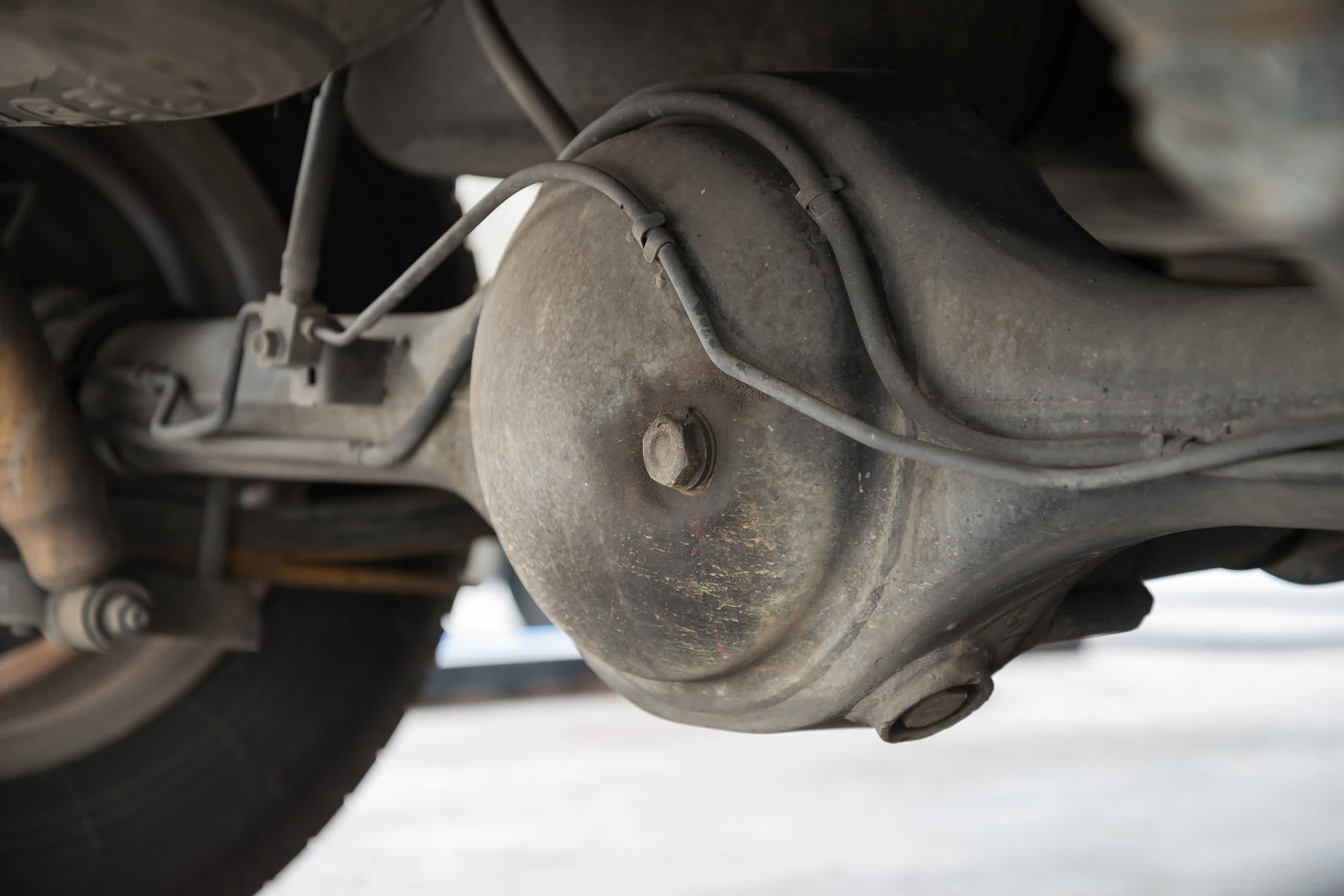
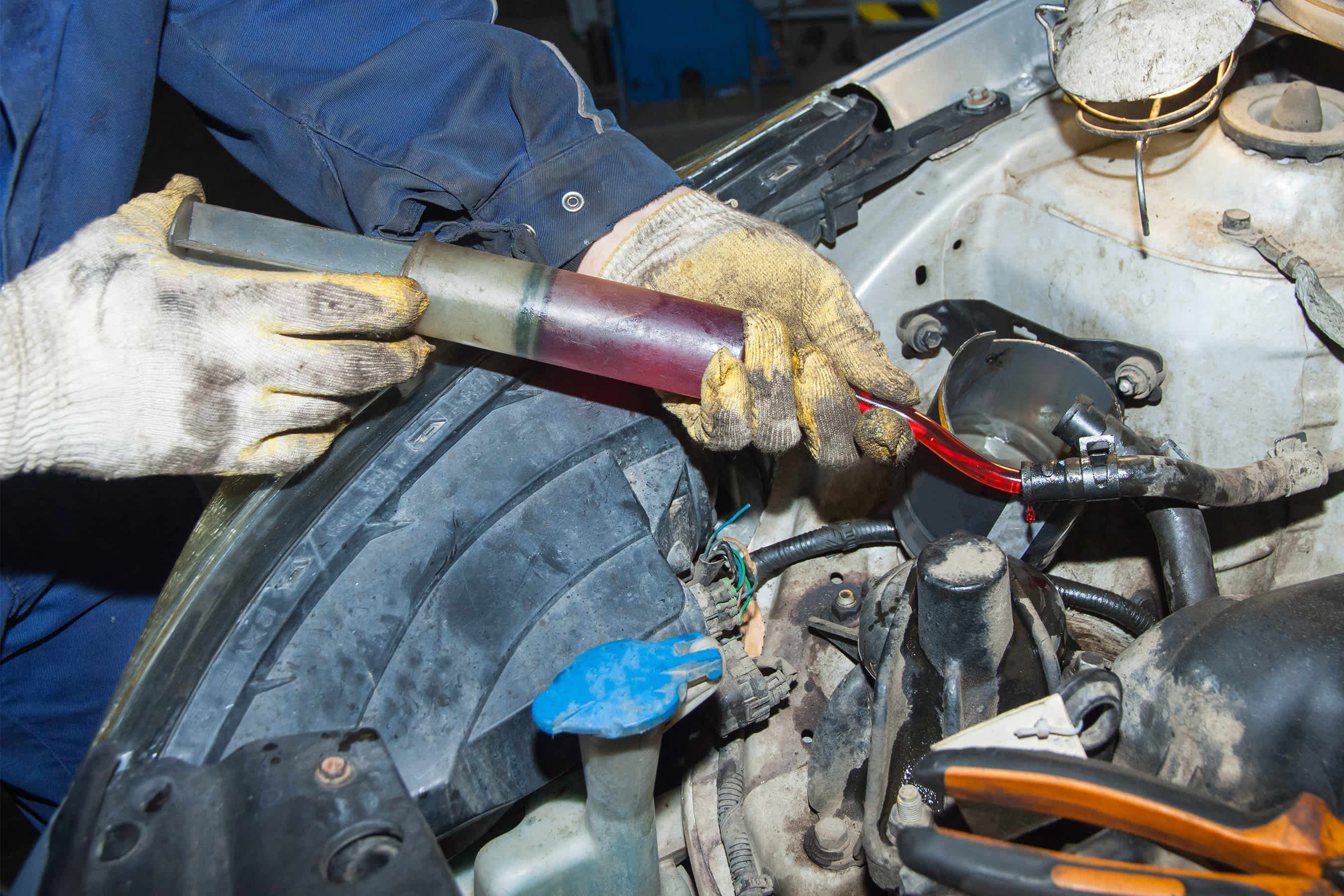
Transfer Case Fluid
Most all-wheel drive and four-wheel drive vehicles have a transfer case (sometimes called a transfer unit on all-wheel drive vehicles). It transfers the power from your car’s transmission and distributes it to its front and rear wheels. The transfer case fluid provides lubrication and cooling to its internal parts.
The level and condition of the transfer case fluid should be checked periodically (unless the unit is sealed).
How to Check
Consult your owner’s manual or supplemental service booklet to determine the correct method for checking the fluid as well as the recommended service interval.
Learn About Bad Transfer Case SymptomsIdentifying Car Fluid Leaks
Knowing which fluids to check in your car when a leak happens helps you determine if a problem is severe and needs urgent attention. It’ll also help you troubleshoot potential fluid-related issues before they escalate and require costly repairs.
One of the ways to identify which fluid is leaking is by checking its color.
-
WHAT TYPE OF FLUID IT COULD BE
-
Engine Oil
-
Engine Coolant
-
Power Steering Fluid
-
Brake Fluid
-
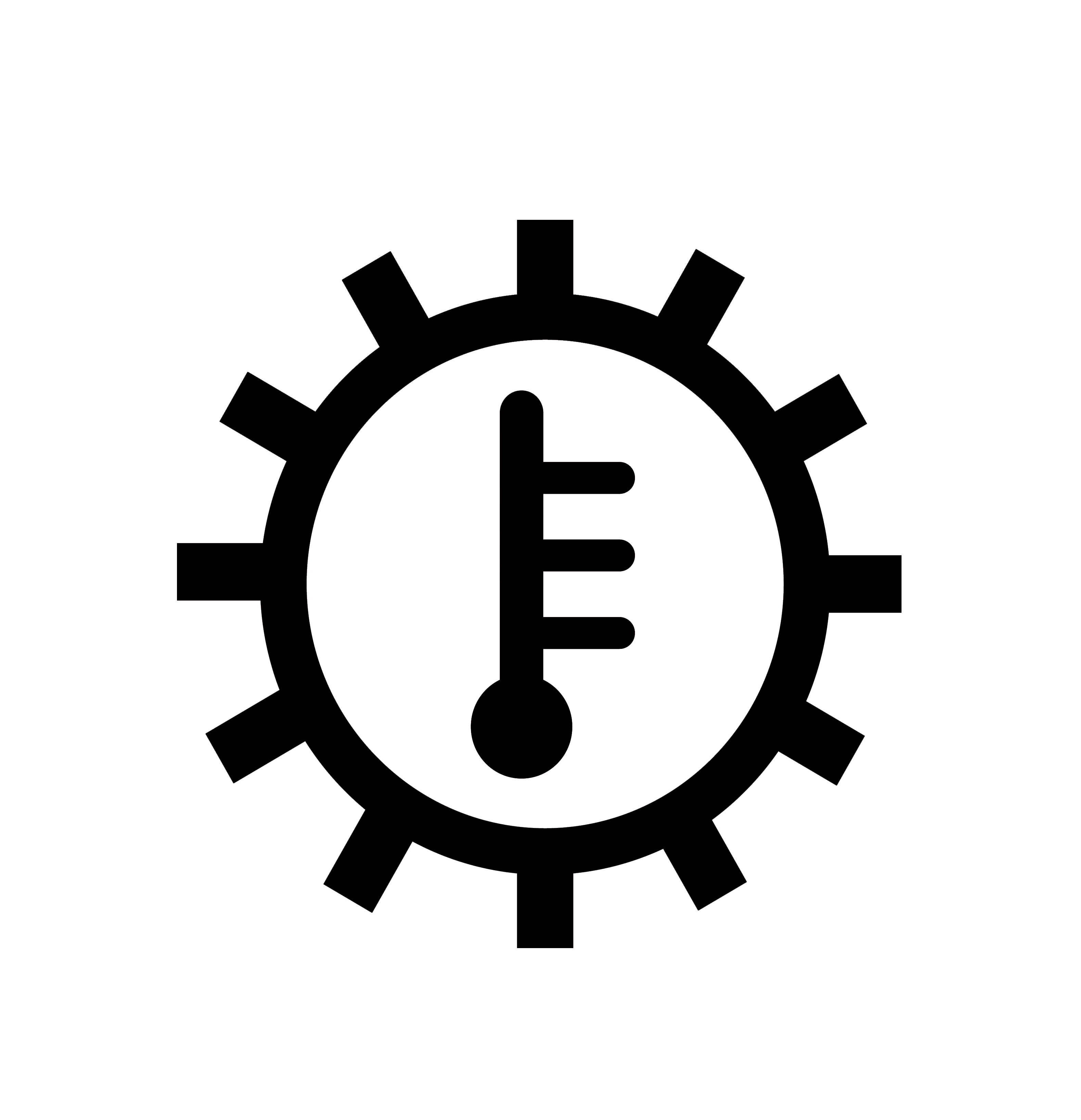 Transmission Fluid
Transmission Fluid
-
Windshield Washer Fluid
-
Differential Fluid
-
Transfer Case Fluid
-
COLOR
-
Honey-Colored
-
Green/Purple
-
Red/Pink
-
Amber
-
Red/Pink
-
Blue/Green/Orange
-
Honey-Colored
-
Red
About CarParts.com
For over 20 years, CarParts.com has been a leader in the e-commerce automotive aftermarket, providing collision, engine, and performance parts and accessories. With over 50 million parts delivered, we've helped everyday drivers across the contiguous United States find the right parts to keep their vehicles on the road.
With a focus on the end-to-end customer experience, we've designed our website and sourcing network to simplify the way drivers get the parts they need. Our vehicle selector and easy-to-navigate, mobile-friendly website offer customers guaranteed fitment and a convenient online shopping experience. And with our own wide distribution network, we bring the very best brands and manufacturers directly to consumer hands, cutting out all the brick-and-mortar supply chain costs to provide quality parts at a discount for our loyal customers. Combined with our 60-day return policy and satisfaction guarantee, CarParts.com makes it simple for customers to get parts delivered straight to their door. CarParts.com is headquartered in Torrance, California.

